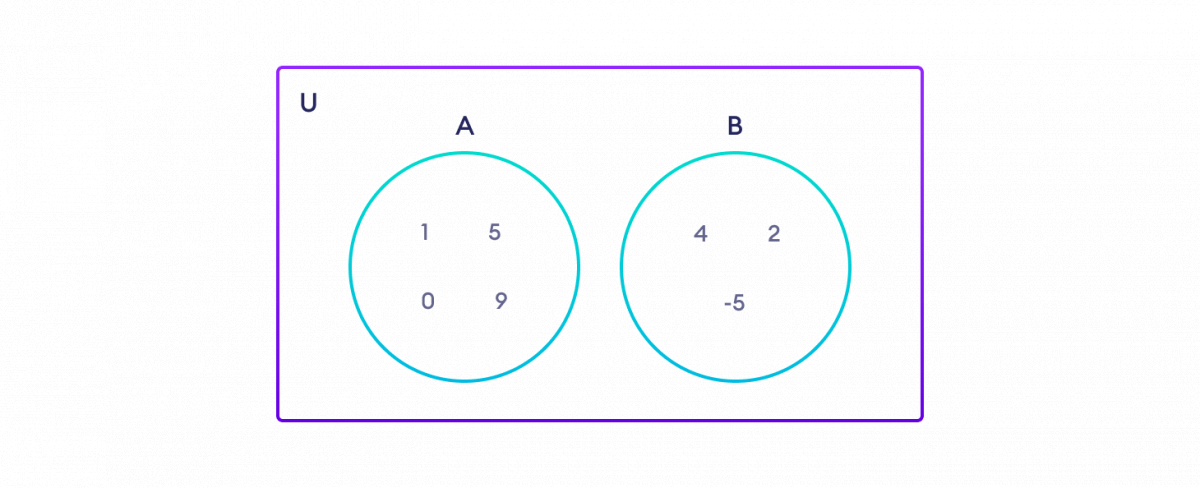Table of Contents
The isdisjoint() method returns True if two sets are disjoint sets. If not, it returns False.
Two sets are said to be disjoint sets if they have no common elements. For example:
A = {1, 5, 9, 0}
B = {2, 4, -5}
Here, sets A and B are disjoint sets.

The syntax of isdisjoint() is:
set_a.isdisjoint(set_b)
1. isdisjoint() Parameters
isdisjoint() method takes a single argument (a set).
You can also pass an iterable (list, tuple, dictionary, and string) to disjoint(). isdisjoint() method will automatically convert iterables to set and checks whether the sets are disjoint or not.
2. Return Value from isdisjoint()
isdisjoint() method returns
Trueif two sets are disjoint sets (if set_a and set_b are disjoint sets in above syntax)Falseif two sets are not disjoint sets
3. Example 1: How isdisjoint() works?
A = {1, 2, 3, 4}
B = {5, 6, 7}
C = {4, 5, 6}
print('Are A and B disjoint?', A.isdisjoint(B))
print('Are A and C disjoint?', A.isdisjoint(C))
Output
Are A and B disjoint? True Are A and C disjoint? False
4. Example 2: isdisjoint() with Other Iterables as arguments
A = {'a', 'b', 'c', 'd'}
B = ['b', 'e', 'f']
C = '5de4'
D ={1 : 'a', 2 : 'b'}
E ={'a' : 1, 'b' : 2}
print('Are A and B disjoint?', A.isdisjoint(B))
print('Are A and C disjoint?', A.isdisjoint(C))
print('Are A and D disjoint?', A.isdisjoint(D))
print('Are A and E disjoint?', A.isdisjoint(E))
Output
Are A and B disjoint? False Are A and C disjoint? False Are A and D disjoint? True Are A and E disjoint? False
Related posts:
Python id()
How to get current date and time in Python?
Python List
Python Program to Represent enum
Python Variables, Constants and Literals
Python List append()
Python String isprintable()
Python Program to Find the Factorial of a Number
Python Program to Find the Square Root
Python String upper()
Python reversed()
Python Dictionary popitem()
Python Program to Find Factorial of Number Using Recursion
Python Program to Find the Factors of a Number
Python getattr()
Python List count()
Python for Programmers with introductory AI case studies - Paul Deitel & Harvey Deitel
Python print()
Python sorted()
Python str()
Python Errors and Built-in Exceptions
Python 3 for Absolute Beginners - Tim Hall & J.P Stacey
Python float()
Python issubclass()
Python Set difference_update()
Python Program to Split a List Into Evenly Sized Chunks
Python break and continue
Python String replace()
Python Keywords and Identifiers
Python Set symmetric_difference_update()
Python open()
Python String maketrans()

